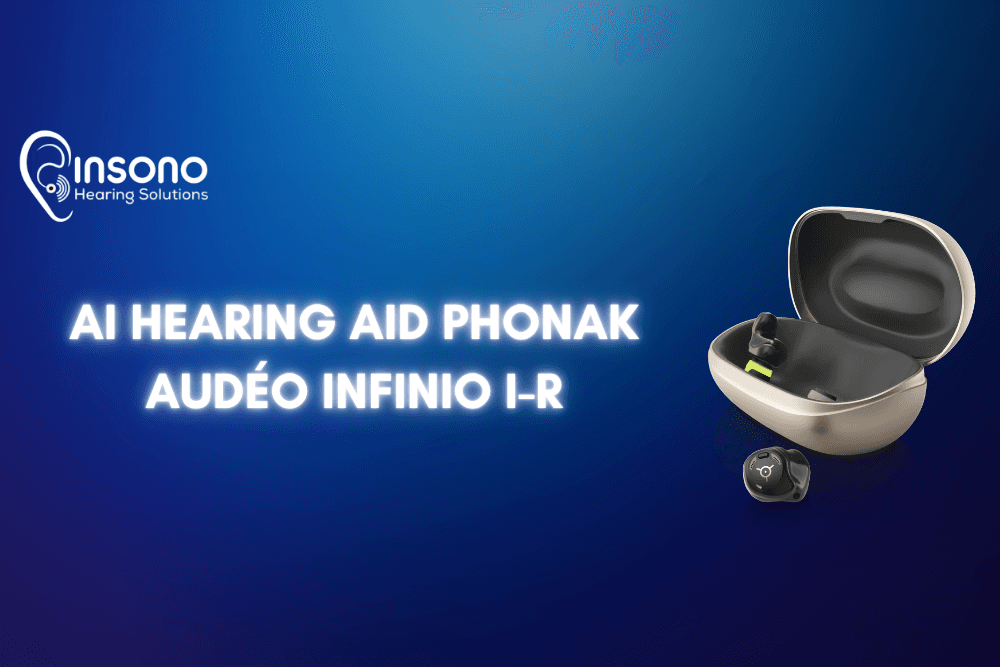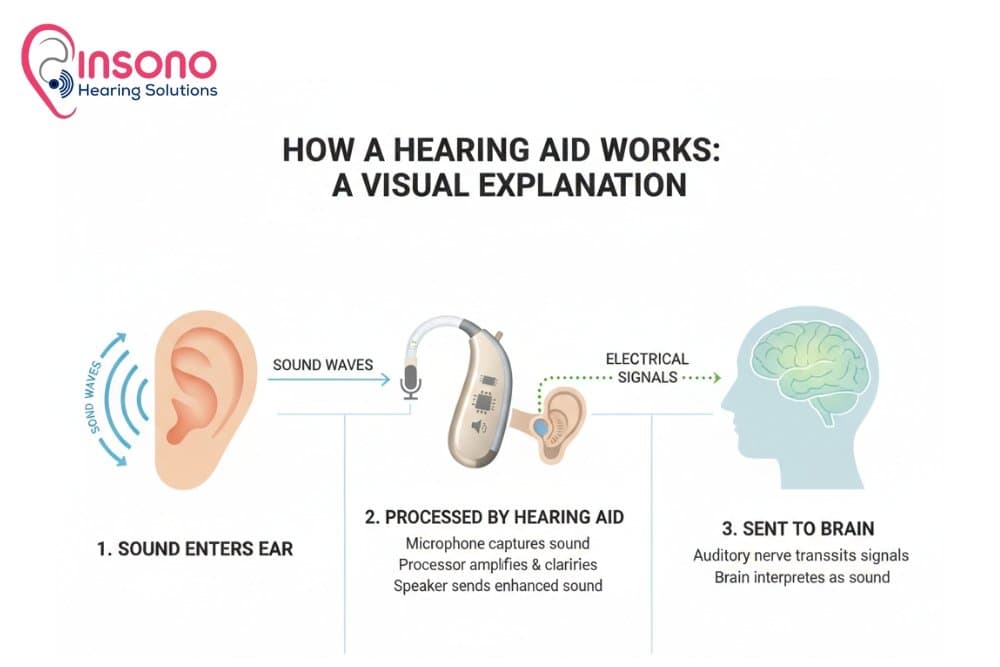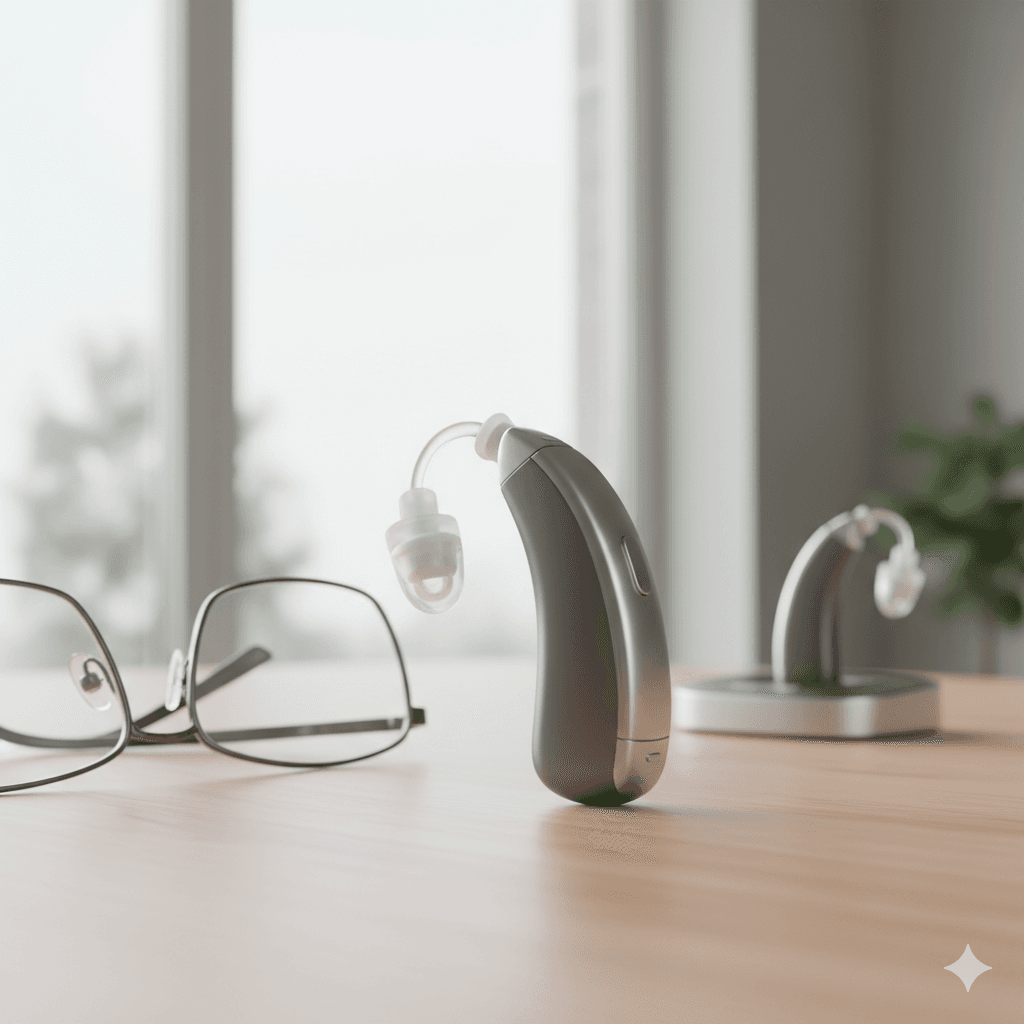Senior Audiologist • 10/18/2025
Overview
A significant step in enhancing your hearing and general quality of life is selecting the appropriate hearing aid.
However, once you begin looking into your options, you’ll have to make a critical choice: should you purchase a hearing aid that uses rechargeable batteries or one that uses disposable ones?
Each type has advantages and disadvantages of its own. Your lifestyle, financial situation, and convenience requirements will all influence your decision.
We’ll explain the differences between the two, evaluate how well they perform, and help you decide which one might be best for you in this comprehensive guide.

The most recent development in hearing technology is rechargeable hearing aids.
Like your phone or earbuds, they have built-in lithium-ion batteries that can be charged with a straightforward charging case.
With a single overnight charge, the majority of contemporary rechargeable hearing aids can last 24 to 36 hours.
Fast-charging options are also available, which can provide you with several hours of power in just half an hour.
Modern features and design: The majority of rechargeable hearing aids have cutting-edge technology like smart app control, AI noise reduction, and Bluetooth streaming.
| Brand | Model | Highlight Feature |
|---|---|---|
| Signia | Pure Charge&Go IX | 36-hour battery with Bluetooth Classic connectivity |
| Phonak | Audéo Lumity L90-RL | AutoSense OS 5.0 for adaptive listening |
| Oticon | Real 1 miniRITE R | Intelligent sound processing with natural listening experience |
| Widex | Moment Sheer 440 RIC | Fast charging with zero-delay sound processing |
Replaceable zinc-air batteries, which are lightweight, compact, and readily available at most pharmacies, power disposable hearing aids.
These batteries activate when exposed to air and can last anywhere from 5 to 10 days, depending on usage and features like Bluetooth streaming.
Disposable models are dependable, reasonably priced, and perfect for those who travel frequently or reside in places where daily charging is impractical.
Always prepared: Keep extra batteries on hand instead of a charger.
Reduced initial cost: Usually less expensive than rechargeable models.
Travel-friendly: Excellent for those who live in places with little or no electricity or are constantly on the go.
Simple replacement: Batteries are inexpensive and easy to swap out.
Drawbacks to Consider
| Brand | Model | Battery Size | Approx. Battery Life |
|---|---|---|---|
| Phonak | Bolero M30-BTE | Size 13 | 8–10 days |
| Oticon | Siya 2 BTE | Size 312 | 6–8 days |
| Signia | Motion 13 Nx | Size 13 | 7–9 days |
| Widex | Dream 220 Fusion | Size 312 | 5–7 days |

| Feature | Rechargeable Hearing Aids | Disposable Battery Hearing Aids |
|---|---|---|
| Power Source | Built-in lithium-ion battery | Replaceable zinc-air battery |
| Battery Life (per charge) | 24–36 hours | 5–10 days per battery |
| Convenience | Plug and charge overnight | Replace batteries manually |
| Cost Over Time | Higher upfront cost, lower maintenance | Lower upfront, higher ongoing cost |
| Eco-Friendliness | ✅ Environmentally friendly | ❌ Produces more waste |
| Ease of Handling | No small parts | Small batteries can be hard to manage |
| Ideal Users | Tech-savvy, routine-oriented users | Travelers or users with irregular routines |
| Popular Example | Signia Pure Charge&Go IX | Phonak Bolero M30-BTE |
Rechargeable models are now preferred by 90% of new users of hearing aids, primarily due to their advanced connectivity and convenience, according to audiologists.
Disposable battery-operated hearing aids are still a good option, though, for people looking for affordability and ease of use.
Choose rechargeable if you want to “set it and forget it.”
Disposable is still a wise option if you travel frequently or don’t want to rely on charging.
What is the lifespan of rechargeable hearing aids?
With the right maintenance, rechargeable hearing aids can last up to seven years, but most only require a battery change every four to five years.
Can my hearing aids be overcharged?
No, when they are fully charged, contemporary rechargeable hearing aids stop charging due to auto-shutoff features.
How can I tell when disposable batteries need to be changed?
You should replace the battery right away if you hear a low-battery warning tone or notice a decline in sound quality.
Which brands of hearing aids provide both kinds?
Both rechargeable and disposable models are available in a variety of price ranges from brands like Phonak, Signia, Oticon, and Widex.

The goal of both rechargeable and disposable battery-operated hearing aids is to improve your hearing and communication.
How you conduct your daily life will determine which option is best for you.
Rechargeable hearing aids are the best option if you want convenience, smart technology, and long-term savings.
Disposable models might be more appropriate for you if you value flexibility and simplicity.
In either case, the objective remains the same: to enable you to hear comfortably, confidently, and clearly each and every day.




